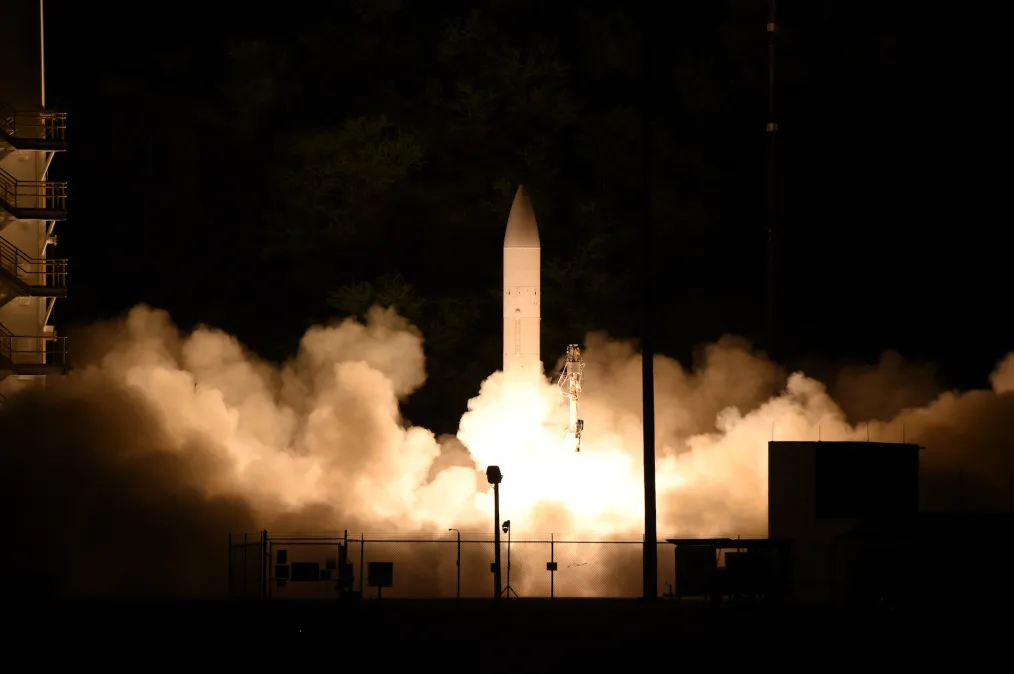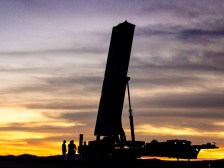Army hopes to field Dark Eagle hypersonic missile in summer 2024 after resolving problems with launcher

SIMI VALLEY, Calif. — After a series of hiccups and schedule slippage, the Army is revising its approach to testing its long-range hypersonic weapon. And the service’s acquisition chief hopes the missiles can be fielded next summer.
Multiple scheduled flight tests of the Dark Eagle have been called off, most recently one that was slated for Oct. 26. Now, officials are charting a new course.
A “big meeting” was held this past week, Assistant Secretary of the Army for Acquisition, Logistics and Technology Doug Bush told DefenseScoop on Saturday. It included his Navy counterpart Frederick “Jay” Stefany, their military deputies, and prime contractor Lockheed Martin.
The Army and Navy have been partnering on the development of hypersonics-related tech.
“It’s really a joint program. So it was myself, Mr. Stefany, the two three-stars and Lockheed working through, you know, finding out exactly what happened and then coming up at the same time with the new test schedule,” Bush said in an interview at the Reagan National Defense Forum.
He continued: “That’s gonna be several things in parallel. Fundamentally, there’s testing the launcher, which, frankly, is where the problems have been. Then there’s the missile itself, you know, the glide body and all that. So I think what we’re hoping to do is come up with a way to … not have to do everything in step function. We can simultaneously perhaps pursue some more aggressive missile tests to gain confidence with the missile while doing some additional testing stuff we would normally do to find exactly what happened with the launcher itself. And then, when we have confidence in the launcher and the missile, then we’ll reschedule a kind of operational test where it’s, you know, all the real equipment. That was what we were trying to do the last few tests” that didn’t go forward successfully.
Hypersonic weapons — which are designed to fly faster than Mach 5, be highly maneuverable and overwhelm enemy air defenses — are a top acquisition priority for the U.S. military. The multibillion-dollar Dark Eagle program is a key element of the Army’s long-range fires modernization portfolio.
U.S. competitors China and Russia are also pursuing hypersonics and the Pentagon is trying to keep pace.
Bush noted that the Dark Eagle program had a lot of concurrency built into it because the Army was trying to move fast.
“Sometimes that works out, sometimes it doesn’t … but I’m confident that when the teams are fully synced and integrated, we’re going to find what’s wrong. We know how to do this. But we, as acquisition professionals, we need to do … perhaps subcomponent testing, for example, to just build confidence before you go spend a whole bunch of money and do another operational test. So [it will be] more of a normal test profile. So, it’ll delay us a bit. But we’re hopeful, you know, definitely in 2024 … we can get back to like a full-up operational test so we can thumbs-up on fielding,” he said. “Hopefully [it will be fielded] well before the end of calendar ’24 — hopefully summertime. But we’re still working on exactly what that schedule looks like.”
Officials had originally aimed to field the system before the end of fiscal 2023.
Meanwhile, the Army is working on a separate long-range fires modernization effort known as the Precision Strike Missile (PrSM) program. For the second increment of PrSM, the service aims to equip the system with a multi-mode seeker that would enable the weapon to attack ships at sea. DefenseScoop asked Bush if down the road the Army could integrate that type of seeker technology into the Dark Eagle to give it an anti-ship capability.
“It certainly hasn’t been decided yet. I think we do expect working with the Navy to keep spending R&D money to improve Dark Eagle over time, just with future blocks … Especially the glide body. Because you know the enemy is gonna react when we have this capability, so we’re gonna have to continuously improve it,” he said. “I wouldn’t say I’ve got an order to go do that yet. But if the weapon works and then we get confident with it, and the military side decides that an anti-ship version of it is worth pursuing, it’s something that we could do … potentially.”






